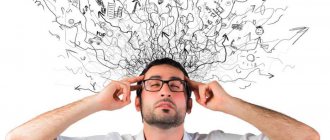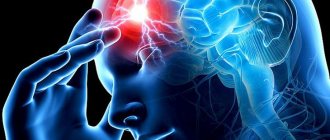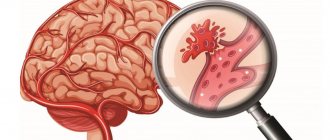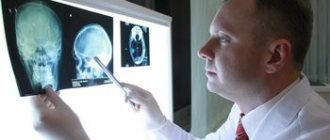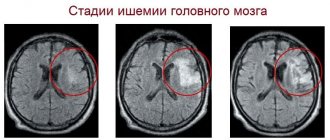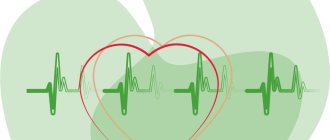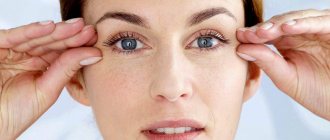Nootropics are neurometabolic stimulants that have a positive effect on complex psychophysiological processes. The mechanism of their action is associated with the restoration of the bioenergetic and metabolic functions of the neuron, as well as the neurotransmitter systems of the brain. The principle of operation of nootropic drugs, as their name suggests, is aimed at improving the functioning of the parts of the brain that are responsible for learning, memory, attention and other cognitive functions.
Nootropic drugs are drugs containing organic or synthetic active substances, as well as their derivatives, which stimulate the functioning of neurotransmitters. They are grouped into a pharmacotherapeutic group with the ATX code N06BX (“Other psychostimulants and nootropic drugs”).
The term nootropics was coined in 1972 by Romanian chemist, psychologist and Ph.D., Corneliu E. Giurgea, who first synthesized piracetam in 1964. Its therapeutic effect turned out to be the opposite of the chemist's expectations - characteristic of psychostimulants, without the occurrence of non-core actions. This effect still remains a mystery to scientists.
Nootropics used in medicine today are presented in the international drug classification system (Anatomical Therapeutic Chemical, ATC), adopted by the Ministry of Health of the Russian Federation in 2002. Other nootropic drugs are created for use within specific countries and are not introduced into the international market.
Clinical use of nootropics
Psychiatrists and psychotherapists can prescribe nootropic drugs either as monotherapy or in combination with other psychotropic drugs. For example, nootropics are prescribed for the treatment of neuroses, attention deficit hyperactivity disorder (ADHD), depressive disorders and other mood disorders, and schizophrenia.
The purpose of prescribing nootropic drugs is to restore the cognitive functions of the brain responsible for the processes of interaction with received information, in particular:
- perception (information, - approx., etc.);
- processing;
- analysis;
- memorization;
- storage;
- correlations;
- conclusions.
Nootropic drugs are also used in other areas of clinical medicine. For example, in pediatrics, where nootropics help restore amino acid deficiency that disrupts protein biosynthesis in the body and metabolic processes in general. In particular, a doctor can prescribe nootropics for children with signs of delayed speech and mental development, mental retardation, and the consequences of perinatal damage to the central nervous system. Doctors of other specializations (speech therapists, neurologists, endocrinologists, gynecologists, urologists, ophthalmologists) can prescribe nootropics depending on the symptoms, including in complex therapy, for various diseases and conditions:
- neuroleptic syndrome;
- stuttering, logoneurosis;
- hyperkinesis, dyskinesia;
- urinary disorders;
- insomnia and other sleep disorders;
- headaches of various etiologies;
- dizziness;
- seasickness;
- open-angle glaucoma;
- vascular diseases of the retina;
- macular diseases;
- diabetic retinopathy;
- Alzheimer's disease;
- Parkinson's disease;
- Huntington's disease;
- with the consequences of TBI.
In other words, the range of use of nootropic drugs is wide and is not limited only to mental disorders. The gentle therapeutic mechanism of drugs in this group allows nootropics to be prescribed to newborns and infants, as well as the elderly. It is also important that nootropic drugs are included in the List of vital and essential drugs for medical use.
Nootropics: drugs that help you think
Imagine the situation: there is an important task ahead that requires maximum concentration of mental abilities, and your brain, as luck would have it, refuses to work. Thoughts are in the clouds, your head seems wobbly, and your memory is full of holes. But there is a whole group of drugs that improve cognitive function!
Norm and pathology
First of all, it would be good to determine the cause of the violations. Memory deterioration, decreased mental performance, as well as headaches and noise in the head may be the first signs of serious diseases associated with impaired blood flow in the brain.
As a rule, this occurs when vasoconstriction occurs against the background of arterial hypertension or atherosclerosis. Both of these conditions progress without proper treatment and often lead to serious consequences such as stroke or heart attack.
In addition, mental decline may be associated with a disease such as Alzheimer's disease. Therefore, at the first alarming signs, it is better to consult a doctor and figure out what is happening in the body. If the examination confirms the pathology, the person needs long-term and serious treatment.
However, fortunately, memory impairment can also be completely harmless. After all, we often work at a high pace, sparing no effort, and stress, physical and mental overstrain make themselves felt by natural fatigue. And what kind of intellectual success can we talk about if an exhausted body directs all its efforts to ensure at least the uninterrupted operation of vital systems? This is where you can pay attention to nootropics.
"Smart" pills
The word “nootropic” was first proposed by the Romanian physiologist and chemist Cornelius Ghirge in 1972. He combined it from two Greek components: noos - mind and tropos - direction. The main goal of nootropics is to improve cognitive function.
For decades, debates have continued in world psychiatry and neurology about the advisability of using drugs in this group by healthy people. The reasons for this are the possible side effects of drugs along with unproven effectiveness. However, in 2015, global sales of this group’s products exceeded $1 billion, and demand for them is constantly growing.
According to the instructions for use, nootropics are able to accelerate the transmission of impulses between the hemispheres of the brain, normalize metabolic processes and enhance microcirculation. It is also said that nootropic drugs improve mental performance, learning and memory, and in addition increase the brain's resistance to damaging factors, such as high stress or lack of oxygen.
Today, nootropics of different classes are used in domestic practice, including:
- racetams, of which Piracetam is a prominent representative;
- derivatives of gamma-aminobutyric acid (Phenibut);
- herbal preparations such as ginkgo biloba extract;
- amino acids (Glycine);
- substances from other groups with a nootropic effect, including correctors of cerebral circulatory disorders (Vinpocetine, Cinnarizine) and general tonics (ginseng extract, melatonin).
Mechanism of action of nootropic drugs
The mechanism of action of nootropics has not been fully studied to date. However, the principle underlying the therapeutic effect, repeatedly confirmed in vivo, is still of interest to researchers in the fields of biochemistry, cytology and pharmacology. In particular, researchers know that the effectiveness of nootropics in clinical medicine is associated with several mechanisms observed at the cellular level in the central nervous system:
- enhance the synthesis of ATP and its derivatives;
- enhance the process of synaptic transmission in the central nervous system;
- enhance the plastic process in the central nervous system by increasing the synthesis of RNA and proteins;
- enhance the process of glucose utilization;
- have a membrane-stabilizing and antioxidant effect.
Thus, the mechanism of action of nootropic drugs is associated with the restoration of metabolic and bioenergetic processes in the brain, which affect a person’s mood, performance and well-being. A correctly selected nootropic will have the effects necessary for treatment, which manifest themselves over a long period of time, provided that the recommendations of the attending physician are followed (for example, regarding a rational and healthy lifestyle, attending psychotherapy sessions, taking first-line medications).
Rice. 1. Neuron
Clinical and pharmacological approaches to the use of nootropics for neurological diseases
Currently, there is a significant increase in the role of chronic psycho-emotional and environmental stress in the life and activities of the population of industrialized countries, which determines the relevance of finding ways to prevent and correct the negative effects of stress on the activity of the nervous system and the processes of neurohumoral regulation, and the prevention of cognitive impairment. An important place in neuroprotection is given to drugs with neurometabolic action (nootropics).
Table. Comparative characteristics of nootropic drugs
The extreme importance of drugs with nootropic effects is evidenced by data on the widespread use of them - according to WHO statistics, a third of the adult population of Europe and Japan takes nootropics, and they can rightfully be classified as vital drugs.
Nootropics (from the Greek noos
– thinking, reason and
tropos
– aspiration) influence the higher integrative functions of the brain and improve mental activity. The first of the nootropics, piracetam, was synthesized in Belgium in 1963. The term “nootropics” was first used in 1972 by Cornelia Giurgea to describe the effect of piracetam, introduced to the market 2 years earlier (1). However, later this term began to be used to refer to drugs with a different chemical structure that can improve cognitive (or educational) functions, affecting metabolic processes in neurons.
According to the WHO definition, nootropics are drugs that have a direct activating effect on learning, improve memory and mental activity, and also increase the brain’s resistance to aggressive influences - hypoxia, trauma, intoxication.
The action of nootropics on the central nervous system is based on two most important effects - the influence on intellectual-mnestic functions and the cerebroprotective effect (2, 3). Drugs in this group improve the functions of memory, perception, attention, thinking, orientation, daily activity, i.e. precisely those functions that are most susceptible to age-related disorders, stress and traumatic effects. Unlike psychostimulants of the mobilizing type, nootropics do not cause psychomotor agitation, depletion of the body's functional capabilities, addiction and pharmacological dependence.
There is currently no generally accepted classification of nootropics. There are a number of classes of nootropic drugs:
1) neurometabolic stimulants:
- pyrrolidone derivatives – Piracetam, Oxiracetam, Aniracetam;
- GABA derivatives – Aminalon (Gammalon), Picamilon, Phenibut;
- pantothenic acid derivatives – Pantogam;
- pyridoxine derivatives – Encephabol (pyritinol);
- preparations containing dimethylaminoethanol - Meclofenoxate, Acefen, Deanol, Centrophenoxine;
- preparations containing peptides and neuroamino acids - Actovegin, Cerebrolysin, Glycine;
- vitamins E and B15, folic acid, succinic acid, sodium ethylaminosuccinate;
- energy-producing substrates – Riboxin, ATP;
2) vasotropic drugs
– ergot alkaloids, vinca preparations, xanthines – Vinpocetine, xanthinol nicotinate, Trental, Cinnarizine, Instenon;
3) stimulants of memory and learning processes:
- anticholinesterase and cholinomimetics - Galantamine, choline alfoscerate, Arecoline, Amiridine, Reminyl, Rivastigmine;
- peptide hormones – ACTH and its derivatives, corticotropin;
- endorphins and enkephalins.
Thus, the class of nootropics includes drugs of various pharmacotherapeutic groups that in one way or another affect the metabolism of neurons or hypothetically have a neuroprotective effect (2, 4).
It has been proven that nootropic drugs can have psychostimulating, antiasthenic, sedative, antidepressant, antiepileptic, nootropic, mnemotropic, adaptogenic, vasovegetative, antiparkinsonian, antidyskinetic effects, and also increase the level of wakefulness and clarity of consciousness (5, 6).
Currently, among nootropic drugs (see table), preference is given to the drug Encephabol (pyritinol) as it has a pronounced clinical effect and an optimal cost/effectiveness ratio and a favorable safety profile.
According to the formal classification criteria of nootropics, Encephabol belongs to mixed type drugs (neuroprotectors). However, if we proceed from the clinical and pharmacological effects of Encephabol (primarily the effect on intellectual and mnestic functions), then this drug is close to true nootropics (racetam derivatives and cholinergic drugs).
Encephabol (pyritinol)
is two molecules of vitamin B6 linked by a disulfide bridge, and the drug does not have any properties similar to those of vitamin B6 (7, 8). The undoubted advantage and significant difference between Encephabol and most drugs that have a neurometabolic effect is its release form - not only tablets, but also a suspension with good organoleptic properties, which is particularly attractive in pediatric practice.
The mechanism of action of Encephabol (pyritinol) is its effect on the energy metabolism of the cell (5). The drug penetrates well through the blood-brain barrier. Under the influence of pyritinol, the transport of glucose and sodium in neurons is enhanced, as well as the exchange of phosphates between nervous tissue and blood is slowed down, and phosphates, the most important substrate for energy supply, accumulate in neurons.
In order to assess the significance of this combination of mechanisms of action from the point of view of clinical practice, it should be remembered that the determinant pathological process in cerebral ischemia is not a lack of oxygen (which plays only a causal role), but the energy deficit generated by it. At the same time, a mechanical increase in the oxygen content in the blood flowing to the brain (oxygenation) or sharp vasodilation not only does not improve the functioning of cells, but, on the contrary, increases the formation of free radicals and damage to the mitochondrial apparatus of neurons. In the presence of a sufficient amount of ATP, even under anaerobic conditions, mitochondria are able to restore and fully carry out their function.
Encephabol ensures the implementation of a complex neuroprotective effect on the main links in the mechanism of degradation and death of neurons during ischemia of brain tissue:
- stimulation of intracellular accumulation of high-energy phosphates (ATP and ADP);
- stimulation of glucose uptake and utilization by neurons;
- membrane-protective antioxidant effect – protecting neurons from the damaging effects of free radicals formed during ischemia (5, 8, 9, 10, 11).
Use of Encephabol in clinical practice
Encephabol (pyritinol) has been shown to restore the cholinergic defect that underlies cognitive impairment in Alzheimer's disease (12). Toledano A. and Bentura ML (13) showed in their studies that Encephabol not only leads to an increase in the activity of the acetylcholinergic system in moderately severe disorders, but also prevents the death of acetylcholinergic neurons. Hartmann H. et al. (14) reasonably believe that the positive effect of Encephabol on aging is due to its ability to influence neuronal membranes.
Experimental data indicate the influence of pyritinol (Encephabol) on the serotonergic (16), dopaminergic (17) and GABAergic (18) systems. Encephabol has a pronounced neuroprotective effect in conditions of experimental ischemia and cerebral edema (15, 19). The positive effect of the drug is associated with its ability to stabilize the cell membranes of neurons (20). In addition, Encephabol improves blood rheology, increases deformability and reduces erythrocyte aggregation, and reduces the number of free radicals (19, 21). There is an improvement in cognitive functions with the administration of 600-1200 mg of Encephabol for 3 days (22). Exposure to Encephabol leads to improved psychomotor activity and the speed of mental processes, increased tolerance to stress, improved memory and learning ability (15, 19). The electroencephalogram records, under the influence of Encephabol, an increase in alpha activity with a simultaneous decrease in slow-wave activity (23).
Clinical studies have proven the effect of Encephabol in dyscirculatory encephalopathy associated with vertebrobasilar insufficiency, as well as after traumatic brain injury (24). Pharmacotherapy with Encephabol reduces apathy, increases interest in the environment, and regulates emotional reactions (18). A combination of the drug with antidepressants is possible (24). Encephabol is used for dementia – both primary degenerative (Alzheimer’s disease) and vascular origin (19, 26). The drug has a positive effect on cognitive and behavioral functions (26).
After a course of therapy with Encephabol, patients who have suffered an acute cerebrovascular accident experience partial regression of asthenic and depressive disorders, speech disorders, and motor disorders are restored to a lesser extent (18). Encephabol is successfully used for the purpose of neuroprotection in conditions of alcohol intoxication and withdrawal symptoms (27). For tension headaches with a predominance of depressive disorders and asthenic manifestations, the use of pyritinol (Encephabol) is also indicated in complex therapy (28).
Pyritinol (Encephabol) is also used for neurological disorders in children associated with perinatal hypoxic brain damage, dysmetabolic and post-traumatic encephalopathies, delays and delays in mental development, attention deficit hyperactivity disorder in children (24, 29). Encephabol is used for functional neurological disorders, cognitive impairment, and school learning difficulties. Encephabol leads to increased resistance of central nervous system structures to damage, improves memory and learning ability. It is extremely important to normalize the interaction of cortical structures with subcortical sections, which often underlies the pathogenesis of neurological disorders in pediatric practice (26, 28, 29).
Thus, at present, the use of Encephabol is most indicated for the following pathologies:
- dementia of various origins (Alzheimer's disease, vascular and mixed forms);
- rehabilitation period of ischemic stroke, chronic cerebrovascular accidents;
- encephalopathies (atherosclerotic, post-traumatic, diabetic, toxic and others);
- consequences of encephalitis;
- astheno-depressive states;
- mental retardation, cerebrosthenic syndrome, attention deficit hyperactivity disorder in children, minimal brain dysfunction in children;
- chronic alcoholism;
- age-related disorders of higher nervous activity, mental performance and memory;
- a state of chronic stress, accompanied by a decrease in higher mental functions;
- emotional burnout syndrome associated with chronic exposure to professional traumatic factors;
- various neurological syndromes with prolonged exposure to occupational hazards and environmental factors.
It should be noted that for all of the above indications, the use of Encephabol corresponds to the concept of “pathogenetic pharmacotherapy”, since its effect is not aimed at eliminating certain symptoms of the disease, but primarily at correcting the main links in the pathogenesis of numerous neurological and psychotic diseases associated with metabolic disorders in brain tissues (5, 28).
The use of Encephabol in combination with other means of neurometabolic therapy (primarily Instenon and Actovegin) is effective. It is used for acute cerebrovascular accidents such as ischemic stroke (rehabilitation period), dyscirculatory encephalopathy, and vascular dementia (28).
An absolute contraindication to the use of pyritinol is hypersensitivity to the drug. Relative contraindications are a history of kidney disease, severe liver dysfunction, pronounced changes in peripheral blood patterns, acute autoimmune diseases (including systemic lupus erythematosus), myasthenia gravis, pemphigus (5, 28). It is known that patients with rheumatoid arthritis and other chronic joint diseases have an increased sensitivity to compounds that contain the SH group, incl. to pyritinol. These patients are at risk of hypersensitivity reactions, immunopathological reactions, as well as disturbances in taste sensitivity and liver function. Encephabol suspension should not be prescribed to patients with fructose intolerance, because The drug contains sorbol. Hypersensitivity reactions to the drug may occur in patients with hypersensitivity to D-penicillamine, since the latter is similar to pyritinol in its chemical structure (thiol groups).
When using the drug according to indications in recommended doses, the development of side effects is unlikely. From the digestive system, nausea, vomiting, diarrhea are possible; rarely - loss of appetite, changes in taste sensitivity, liver dysfunction (increased transaminase levels, cholestasis). From the central nervous system, sleep disturbances are possible; rarely - increased excitability, headache, dizziness, fatigue. Experimental studies have not established the presence of teratogenic or embryotoxic effects of pyritinol (28).
The duration of Encephabol therapy is at least 1 month and depends on the severity and clinical picture of the disease. Encephabol is quickly absorbed from the gastrointestinal tract, the maximum concentration of the drug in the blood is observed after 30-60 minutes. after taking it. The half-life is about 4 hours. For adults, the average dose is 600 mg/day. (10 ml suspension 3 times/day). Newborns are prescribed Encephabol from the 3rd day after birth, 20 mg (1 ml of suspension) per day for a month, the drug should be given in the morning. For children over 2 months of age, the dose is increased by 20 mg (1 ml) every week until the daily dose reaches 100 mg (5 ml of suspension). Children aged 1 to 7 years are prescribed a daily dose of 50 mg to 300 mg, depending on the indications (2.5-5 ml of suspension 1-3 times / day). For children over 7 years of age, the daily dose ranges from 50 mg to 600 mg (2.5-10 ml suspension 1-3 times/day) (28).
In conclusion, it should be noted that many years of experience in using the drug Encephabol in clinical practice allows us to speak about the leading place of this drug in the group of nootropics and optimistically assess the prospects for its further use in neurological, geriatric, pediatric and occupational pathology practice.
The effectiveness of nootropics
The effectiveness of nootropics, in particular, is explained by the therapeutic effect on the neurotransmitter systems of the brain - monoaminergic, cholinergic and glutamatergic. Nootropics help restore the regulation of the synthesis of phospholipids and proteins in neurons, normalize the structure of cell membranes; reduce the oxygen demand of neurons; suppress the formation of free radicals and lipid peroxidation of cell membranes; increase the protection of neurons to adverse factors affecting their proper functioning.
The results of biochemical blood tests and EEG, as well as laboratory experiments using modern microscopes, allow us to visualize the effectiveness of nootropics. For example, the results of an electroencephalogram can clearly see the effect of using nootropics - increased amplitudes of transcallosal evoked potentials, enhanced power spectrum of the EEG of the cortex and hippocampus, an enlarged dominant peak, smoothed interhemispheric asymmetry.
Rice. 2. Visualization of the effect of nootropics on the electroencephalogram
Monoamine neurotransmitters
Classic monoamines include: histamine, adrenaline, dopamine, norepinephrine, serotonin, melatonin. Monoamine neurotransmitters and neuromodulators act as neurotransmitters in the monoaminergic systems of the central nervous system, which regulate a variety of processes in the body, including:
- emotional condition;
- cognitive activity;
- concentration;
- ability to remember information;
- excitation processes.
Cholinergic neurotransmitters
Cholinergic neurotransmitters in the central nervous system are responsible for the processes of excitation and inhibition in the body. Neurotransmitters of this central nervous system support the autonomous functioning of internal organs and vital processes associated with the work of innervated organs and participate in the transmission of motor activity impulses. Cholinergic deficiency directly affects the imbalance of the central nervous system structures associated with it and can cause the development of:
- neurological symptoms;
- emotional-volitional pathology.
Glutamatergic neurotransmitters
Glutamatergic neurotransmitters are involved in CNS processes associated with cognitive function - they help process and store information. In addition, these neurotransmitters are responsible for motor coordination, response to pain, and the body’s immune response; are responsible for the quality of transmission of nerve impulses and the state of the nervous system as a whole.
Rice. 3. Central nervous system
Ginkgo biloba leaves
Preparations made from the leaves of Ginkgo biloba or Ginkgo biloba contain a number of compounds that, according to the manufacturer’s description, determine the nootropic effect of the drugs by improving microcirculation, reducing platelet aggregation and preventing the formation of free radicals. Improving blood flow, including in the vessels of the brain, increases mental performance; also describe improvements in memory and learning ability.
The plant came to European medicine from traditional medicine in Asian countries, where ginkgo was used to improve memory and reduce psycho-emotional stress. Currently, preparations from ginkgo biloba are often recommended for disorders associated with cerebrovascular accidents, dizziness, and headaches (see Table 3). In addition, attempts have been made to correct sexual dysfunction in men using these drugs.
However, meta-analysis data did not reveal significant effects of Ginkgo biloba in the following categories:
- patients with dementia and cognitive impairment;
- patients who have suffered an ischemic stroke;
- patients suffering from chronic tinnitus;
- patients with age-related retinal degeneration;
- patients with pathology of peripheral arteries (intermittent claudication);
- patients with schizophrenia (preparations of ginkgo biloba as part of complex antioxidant therapy).
Nootropics for children, adults and the elderly
Currently, clinical studies of nootropics are being conducted in the USA and Europe to identify therapeutic effects that can be used to treat diseases in various fields of medicine. It should be emphasized that we can talk about nootropics with proven effectiveness only in terms of the positive mechanism of their action, recorded by both researchers and doctors in clinical practice.
For example, on February 12, 2010, data from a clinical study on the use of nootropics in the treatment of CNS pathologies was published in the USA (Malykh A., Sadaie R. “Piracetam and piracetam-like drugs: from basic science to novel clinical applications to CNS disorders”). The study demonstrated the neuroprotective effect of the substance, effectiveness in the treatment of cognitive disorders of cerebrovascular and traumatic etiology, as well as associated depressive states. In particular, the study notes the effectiveness of nootropics as part of complex therapy in the treatment of epilepsy.
Similar and other positive effects of using nootropics are noted in many modern clinical studies, the results of which are published in scientific journals and are publicly available on the Internet. In other words, nootropics with proven effectiveness exist, they are presented on the pharmaceutical market, and are actively prescribed by doctors in various fields of medicine, but the final decoding of the therapeutic mechanism of drugs in this group has yet to be learned.
Nootropics for children
Nootropics are used in the treatment of various diseases associated with central nervous system pathology in children. In the first years of a child’s life, they can be prescribed for the prevention and treatment of delayed psycho-speech-motor development; at a later age - to stimulate the activity of the central nervous system systems responsible for concentration, the learning process, memory, and the ability to reproduce information.
Nootropics for children include drugs with dominant or predominant mnestic effects (“true” nootropics):
- racetams;
- cholinesterase drugs;
- neuropeptides and their analogues;
- amino acid activators;
- neuroprotectors;
- activators of brain metabolism;
- cerebral vasodilators;
- calcium antagonists;
- antioxidants;
- GABA activators.
Indications for prescribing nootropics for children are:
- delayed speech development;
- impaired mental function;
- cognitive impairment due to organic brain damage (consequences of neuroinfections, head injury, genetic pathology);
- mental retardation;
- ADHD;
- Parkinson's disease;
- neurogenic urination disorders;
- neurosis-like conditions;
- stuttering, predominantly clonic;
- asthenic and anxiety-neurotic conditions;
- epilepsy (in complex therapy).
Nootropics for adults
Biological therapy for mild, borderline and severe mental disorders may include nootropic drugs. They are prescribed for the occurrence of pathological conditions associated with cognitive functions, mood and sleep. For example, they have a positive effect on the psycho-emotional state and personal effectiveness as an addition to psychotherapeutic treatment, and accelerate the achievement of the desired result.
Nootropics for adults used in mono- and complex therapy of mental disorders:
- pyrrolidone derivatives (Nootropil - note, for example, and further);
- cyclic derivatives, GABA (Pantogam, Phenibut, Aminalon);
- acetylcholine precursors (Deanol);
- pyridoxine derivatives (Pyritinol);
- Devincan derivatives (Vincamine, Vinpocetine);
- neuropeptides (Vasopressin, Oxytocin, Thyroliberin, Cholecystokinin);
- antioxidants (Ionol, Mexidol, Tocopherol).
The above nootropics are prescribed for mental disorders arising from vascular diseases of the brain (F00-F09, “Organic, including symptomatic, mental disorders”):
- exogenous-organic mental disorders;
- transient psychotic disorders;
- persistent mental disorders;
- psychoorganic disorders;
- vascular dementia.
Nootropics for older people
Neuroprotective nootropic therapy for older people is prescribed for Alzheimer's disease, Pick's disease, as well as syndromes including confusion, instability of attention, confusion, disorientation in space and time, memory problems, fragmented thinking, emotional imbalance, fear, anxiety, motor agitation or lethargy, deceptions of perception, sleep disturbances.
Rice. 4. Structure of the nervous system
Nootropics
Nootropics (from the Greek noos - thinking, mind, tropos - direction, desire, affinity) are neurometabolic drugs that have a direct activating effect on the integrative mechanisms of the brain, optimize cognition (processes of memory, thinking, intelligence) and increase the level of wakefulness (vigilance). ), increase the brain’s resistance to harmful influences, and also improve cortico-subcortical connections.
Due to the ability of nootropics to improve mentality in healthy and sick people, they are called cognitive enhancers. Nootropics stimulate the transmission of excitation in central neurons, accelerating interneuron contacts and the exchange of neurotransmitters; activate the synthesis of protein and RNA in neurons, stabilize the membranes of nerve cells, improve energy processes, microcirculation and blood supply to the brain (without vasodilation), increase the latter’s resistance to hypoxia, have pronounced antihypoxic, neurotrophic and cerebroprotective activity, etc.
At the same time, nootropics do not affect the course of neurovegetative processes, do not have significant psychostimulating, hypnotic, sedative and analgesic effects, do not cause specific changes in the EEG, do not have significant toxicity, and do not impair blood circulation. In general, the mechanism of the therapeutic effect of nootropics has not been studied enough.
1. Piracetam. Synonyms: Lucetam, Memotropil, Nootobril, Nootropil, Noocetam, Pyrabene, Piramem, Apagon, Centilan, Euvifor, Gabazet, Norotrop, Stimubral and many others. etc. Indicated for the treatment of various psychiatric, neurological and somatic diseases.
In psychiatric practice, these are asthenic disorders of various origins, mental retardation, learning difficulties, post-stress disorders, depressive states with asthenia, apathy, adynamia, lethargy and senesto-hypochondriacal symptoms, deficiency disorders in schizophrenia with a deficit of activity, attention and communication, organic processes of various etiologies , including atrophic, traumatic, vascular and intoxication. Piracetam improves the tolerability and effectiveness of antidepressants and antipsychotics, and the severity of side effects during treatment with them. Prescribed for the treatment of abstinence, relief of exogenous-organic psychoses.
In neurology and somatic practice, it is used in the treatment of a number of organic diseases of the brain (vascular processes, comatose and subcomatose states, intoxication, trauma, inflammatory processes and their consequences, birth trauma, asphyxia, the period of convalescence after meningitis, encephalitis, etc.), heart attack myocardium, cortical myoclonus, sickle cell anemia, viral neuroinfection, etc. It is prescribed orally, intramuscularly, intravenously or by infusion. In the treatment of chronic conditions, it is usually prescribed orally, regardless of food intake, 3-4 times a day in doses of up to 2.4 g, sometimes up to 3.2 g. Treatment begins with 1.2 g / day, the dose is then increased gradually, by 0 .4 g per day. The therapeutic effect occurs after 2–3 weeks of treatment; subsequently, the dose is gradually reduced to a maintenance dose of 1.2–1.6 mg/day. For stroke, up to 12 g per day is prescribed for 2 weeks. For children, the drug is prescribed in smaller doses: under 5 years of age - 200 mg 3 times a day, from 5 to 16 years - 400 mg 3 times a day.
The course of treatment with piracetam lasts from 2–3 weeks to 2–6 months.
In acute painful conditions (coma, poisoning with morphine and barbiturates, withdrawal symptoms, pre-delirious states, acute complications during psychopharmacotherapy), piracetam is prescribed intramuscularly or intravenously. Therapy begins with the introduction of 2–4 g/day and quickly increases the dose to 4–7 g/day or more. After the condition improves, they switch to taking the drug orally.
Side effects: possible agitation, irritability, anxiety, arousal (including sexual), weakness, sleep disturbance, dyspeptic disorders, abdominal pain, tremor, dizziness, allergic reactions; Elderly patients may experience an increased frequency of attacks of coronary insufficiency. Side effects occur especially often in patients with psychiatric pathology. In such cases, the dose of the drug should be reduced or stopped taking it for a while.
Contraindications for use: hypersensitivity, acute renal failure, hemorrhagic stroke, pregnancy, breastfeeding, diabetes, age under 1 year.
Release form: capsules of 400 mg in a package of 60 pieces; tablets of 200 mg in packs of 60 and 120 pieces; 20% solution in ampoules of 5 ml (1 g of substance per ampoule) in a package of 10 pieces; piracetam granules for children in a package of 56 g (2 g piracetam, 50 g sugar and fillers) in glass jars. Combination drugs are available: Fezam - contains piracetam with cinnarizine; Procetam (Orozetam) - piracetam with orotic acid; Diapiram - piracetam with diazepam, etc.
2. Aminalonum, gamma-aminobutyric acid (GABA). Synonyms: Gammalon, Ganevrin, Apogamma, GABA, Gaballon, Mielogen, etc. It is known that GABA is the main mediator involved in the processes of central inhibition through interaction with GABAergic receptors of type A and type B. A close connection of the latter with benzodiazepine receptors has been established: benzodiazepines potentiate the effect of GABA, which, in turn, is the effect of benzodiazepines, many hypnotics and anticonvulsants. Under the influence of GABA, the energy processes of the brain are activated, the respiratory activity of tissues increases, and the brain's utilization of glucose and hemodynamics improve. The nature of the action of GABA is close to nootropics. It is used mainly in geriatric practice and in the treatment of children with mental retardation, as well as for vascular disorders of the brain. There is information about the effectiveness of the use of aminalon in the treatment of depression with asthenohypochondriacal symptoms, alcoholic encephalopathy, alcoholic polyneuritis and dementia.
It is prescribed orally before meals 3-4 times a day. Adults are prescribed up to 3.75 g/day, the average dose is 1.5–3 g/day. Children, depending on age, are prescribed from 0.5 to 3 g/day. The course of treatment is up to 2–6 months. For motion sickness, adults are prescribed 0.5 g, children - 0.25 g 3 times a day for 3-4 days.
Side effects are rare; in some cases, in the first days of treatment, dyspeptic symptoms, sleep disturbances, a feeling of heat, and blood pressure fluctuations are observed. When the dose is reduced, these effects usually disappear quickly.
Contraindications for use: hypersensitivity. Release form: tablets of 0.25 g in a package of 100 pieces.
3. Sodium oxybutyrate (Natrii oxybutiratas) . Synonyms: Sodium oxybate, Sodium salt of hydroxybutyric acid, Natrium oxybutiricum, Oxybate sodium. A nootropic with pronounced antihypoxic, sedative, general anesthetic and central muscle relaxant activity, in large doses induces sleep and a state of anesthesia. Enhances the effect of analgesics, narcotic drugs, and has an anti-shock effect. In psychiatric practice, it is used to treat neurotic and neurosis-like conditions, intoxication and brain injuries, and night sleep disorders (including narcolepsy). In somatic medicine it is used as a means of anesthesia, in the treatment of hypoxic cerebral edema, hypoxic condition of the retina, and glaucoma.
Prescribed orally, intramuscularly and intravenously. Orally for the treatment of neurotic conditions, take 0.75 g (1 tablespoon of 5% solution 2-3 times a day), insomnia - 1.5-2.25 g at night once (2-3 tablespoons of 5% solution) .
Release form: 66.7% solution in 37.5 ml bottles (before use, prepare a 5% aqueous solution by diluting the contents of the bottle in 0.5 liters of freshly boiled chilled water); 20% solution in ampoules of 10 ml in a package of 10 ampoules.
Side effects: with rapid intravenous administration, there may be motor agitation, convulsive twitching of the limbs and tongue, and in case of overdose, respiratory arrest. Upon recovery from anesthesia, motor and speech agitation sometimes occur. The antidote is bemegride. With prolonged use of the drug, hypokalemia is possible.
Contraindications for use: hypokalemia, myasthenia gravis, hypersensitivity, late toxicosis of pregnancy with arterial hypertension.
4. Phenibut - see "Antidepressants."
5. Pantogamum. Synonyms: Calcium homopantothenat, Hopaten, Hopa, etc. Nootropic with anticonvulsant, moderate and short-term hypotensive effects. Prolongs the effect of barbiturates, reduces reactions to painful stimuli. It is used to treat residual organic brain failure, decreased activity and disability, mental retardation in children, and is also effective for hyperkinesis, Jacksonian epilepsy, parkinsonism, neuroleptic syndrome, clonic stuttering in children, delayed speech development, epilepsy with petit mal and polymorphic seizures (in combination with specific antiepileptic drugs).
It is prescribed orally 15–30 minutes after meals. The daily dose for adults is 1.5-3 g, for children - 0.75-3 g in three divided doses. The course of treatment is from 1 to 4 (sometimes up to 6) months. Courses of treatment are repeated if necessary.
Release forms: tablets of 0.25 g and 0.5 g in a package of 50 pieces.
6. Picamilon (Picamilonum). Nootropic with tranquilizing and vegetotropic effects. It is prescribed orally regardless of food intake. For cerebrovascular diseases and vegetative dystonia, adults are prescribed from 0.02 to 0.05 g 2-3 times a day, the course of treatment is 1-2 months, with the course repeated after 5-6 months. In the complex of antidepressant therapy in old age, 0.04–0.2 g (in 2–3 doses) is recommended for 1.5–3 months. During the period of alcohol withdrawal, 0.1–0.15 g/day is prescribed, the course of treatment is 6–7 days, the duration of treatment can be increased to 4–5 weeks in doses of 0.04–0.06 g/day. To restore working capacity, 0.06–0.08 g/day is prescribed for 1–1.5 months.
Side effects: increased irritability, agitation, anxiety, headache, dizziness, mild nausea, itching, allergic rash.
Contraindications for use: hypersensitivity, acute and chronic kidney diseases.
Release form: tablets of 0.01 g, 0.02 g and 0.05 g in a package of 30 pieces.
7. Pyriditol (Piriditolum). Synonyms: Pyritinol, Cerebol, Enerbol, Encephabol, Biocephalin, Cogitan, Enbol, Enerbol, Pyritinol, etc. A nootropic with pronounced antidepressant activity. Enhances the effects of phenamine, the anticonvulsant effect of phenobarbital, and prolongs the effect of barbiturates. Indicated for the treatment of minor depression of various origins and neurosis-like conditions with symptoms of asthenia, apathy, adynamia, as well as residual organic conditions with a predominance of anergy phenomena, in children - mental retardation, cerebrasthenic syndrome, encephalopathy, mental retardation.
It is prescribed orally 15–30 minutes after meals 2–3 times a day (it is not recommended to take the drug in the evening). The daily dose for adults is from 0.2 to 0.6 g, for children - 0.05-0.3 g. The course of treatment is from 1 to 3 months, repeated courses - after 1-6 months.
Side effects: headache, nausea, insomnia, irritability, in children - psychomotor agitation, sleep disturbance.
Contraindications for use: psychomotor agitation, epilepsy, increased convulsive readiness, hypersensitivity.
Release forms: tablets of 0.05 g, 0.1 g and 0.2 g in a package of 60 pieces. Encephabol is available in tablets of 0.1 g and in the form of syrup of 0.1 g in 5 ml.
8. Acephenum. Synonyms: Analux, Meclofenoxate, Centrophenoxine, Cerutin, Claretil, Lucidril, Meclofenoxate hydrochloride, Ropoxil, etc. Metabolic products of acephen are free radical inhibitors, have the properties of nootropics and mild stimulants and are marketed under the name Deanol (Dinetal, Etanamin, etc.). Nootropic with a moderate stimulating effect. Indicated for the treatment of asthenia, memory loss in old and senile age, obsessions and other neurotic disorders.
It is prescribed orally at 0.1–0.3 g 3–5 times a day, the course of treatment is 1–3 months. Side effects are rare. Sometimes there is an exacerbation of psychotics, fear and anxiety. Contraindications for use: infectious diseases of the central nervous system, hypersensitivity.
Release form: tablets of 0.1 g in a package of 50 pieces.
9. Memantine. Synonym: Akatinol Memantine, Akatinol Memantin. Neuroprotective, antispastic, antiparkinsonian agent. A non-competitive antagonist of N-methyl-D-aspartate (NMDA) receptors, it inhibits glutamatergic neurotransmission and the progression of neurodegenerative processes, and has a neuromodulatory effect. Indicated for the treatment of mild to moderate dysfunctions of the central nervous system (weakening of memory, attention, interests, fatigue, psychoorganic decline in personality), muscle spasticity and motor disorders due to damage to nervous structures (brain injuries, multiple sclerosis, Parkinson's disease, etc.). The drug enhances the effect of barbiturates, neuroleptics, anticholinergics, levodopa, dopamine receptor agonists, amantadine, and may change the effect of dantrolene and baclofen.
It is prescribed orally during meals, without chewing and with liquid. Adults - starting from 3 mg/day, if necessary, with a weekly increase in dose by 5–10 mg/day to 30–60 mg/day, and then reducing it to maintenance (10–20 mg/day). Children - 0.5 mg/kg/day or 1 drop per 1 kg of weight.
Side effects: dizziness, internal or motor restlessness, fatigue, increased intracranial pressure. Prescribe with caution to persons whose work requires high concentration of attention.
Contraindications for use: hypersensitivity, confusion, severe dysfunction of the liver and kidneys. Restricted for use in epilepsy, thyrotoxicosis, pregnancy, breastfeeding.
10. Cerebrolyzin. Synonym: Cebrilisin. It is a mixture of metabolically active neuropeptides with pronounced neurotrophic activity. Indicated for the treatment of organic brain damage with cognitive deficits, mental retardation
chemical development in children, dementia syndromes of various origins (Pick's disease, Alzheimer's disease, vascular dementia, etc.), as well as endogenous depression resistant to antidepressants. The drug enhances the effect of antidepressants.
Prescribed daily intravenously or intramuscularly. In acute conditions in adults (ischemic stroke, head injury, complications after brain surgery), it is administered intravenously over 60–90 minutes in an amount of 10–60 ml in 100–250 ml of saline. The course of treatment is 10–25 days. In the residual period - 5-10 ml IV for 20-30 days. For dementia syndromes - 10-20 ml IV for 3 weeks, for psychoorganic syndrome and depression - 5-10 ml IV for 20-25 days. In neuropediatric practice - 1–2 ml (up to 1 ml per 10 kg of weight) intramuscularly for 1 month, repeating the course 2–3 times a year.
Side effects: hyperthermia with rapid intravenous infusion.
Contraindications for use: hypersensitivity, acute renal failure, status epilepticus. Use with caution during pregnancy, especially in the first 3 months.
Release forms: solution of 215.2 mg in ampoules of 1 ml; 215.2 mg in ampoules of 5 ml and 10 ml; 215.2 mg in 30 ml bottles.
11. Pantogam. Nootropic with anticonvulsant and antidysuric effects. Helps normalize GABAergic transmission in chronic alcoholism, has analgesic properties, prolongs the effect of novocaine and sulfonamides, inhibits the increased bladder reflex and detrusor tone. Indicated for the treatment of disorders of higher cerebral functions of various origins in adults and children (vascular, traumatic encephalopathy, atrophic processes, etc.), treatment of epilepsy, trigeminal neuralgia, chronic neuroleptic syndrome, hyperkinesis, PTSD, urination disorders (pollakiuria, urgency , enuresis). The effects of the drug are enhanced by glycine and xidifon. Pantogam, in turn, prolongs the effect of barbiturates, potentiates the effects of anticonvulsants, nootropics, local anesthetics, and prevents the side effects of phenobarbital, finlepsin, and neuroleptics.
It is prescribed orally 15–30 minutes after meals in the morning and afternoon. Adults - 0.25–1 g per dose, 1.5–3 g/day; course of treatment - 1-6 months, repeated course - after 3-6 months. For schizophrenia (in combination with psychotropic drugs) - 0.5-3 g/day, course of treatment - 1-3 months. For epilepsy (in combination with anticonvulsants) - 0.75–1 g/day, course - up to 1 year or more. For extrapyramidal hyperkinesis (as part of complex therapy) - 0.5-3 g/day, course - 4 months or more. For the consequences of neuroinfection and head injury - 0.25 g 3-4 times a day. For asthenic conditions - 0.25 g 3 times a day. For dysuria - 0.5–1 g 2–3 times a day.
Children single dose - 0.25-0.5 g, daily dose up to 1 year - 0.5-1 g, from 1 to 3 years - 1.5-2 g, from 3 to 15 years - 2.5- 3 g. The daily dose is increased over 7–12 days, the maximum dose lasts 15–40 days, after which it is reduced until discontinued within 7–8 days. Breaks between courses of therapy are 2 months. For dysuria in children - 25–50 mg/kg, course 1–3 months.
Side effects: allergic reactions.
Contraindications for use: hypersensitivity, acute severe kidney disease, first trimester of pregnancy.
Release forms: tablets of 250 mg and 500 mg in cans of 50 pieces; 10% syrup, 50 ml and 100 ml.
12. Glycine. Nonessential amino acid. Nootropic with antiepileptic, antistress and sedative effects. Indicated for the treatment of asthenia, PTSD, neuroses and neurosis-like conditions, vegetative dystonia, acute ischemic stroke, consequences of exogenous-organic and intoxication diseases. Glycine reduces the toxicity of anticonvulsants, neuroleptics, antidepressants, and can enhance the effect of hypnotics, tranquilizers and antipsychotics.
Prescribed orally sublingually 0.1 g 2-3 times a day for 2-4 weeks. Children under 3 years old - 0.05 g 2-3 times a day, over 3 years old - 0.1 g 2-3 times a day. For sleep disorders - 0.05–0.1 g 20 minutes before bedtime. For ischemic stroke, during the first 3-6 hours - 1 g (buccal or sublingual with 1 teaspoon of water), then - 1 g / day for 1-5 days, over the next 30 days - 0.1-0 .2 g 3 times a day.
Side effects: allergic reactions are possible. Contraindications for use: hypersensitivity. Release form: tablets of 0.1 g in a package of 50 pieces.
13. Idebenone. Nootropic. Indicated for the treatment of asthenia, asthenodepressive, asthenovegetative conditions, PTSD, psychoorganic syndrome of vascular and other origins, as well as hereditary mitochondrial diseases (MELAS syndrome, Leber optic atrophy, Leigh's disease) and Friedreich's ataxia.
Prescribed orally after meals, 30 mg 2-3 times a day (last dose no later than 17:00). The course of treatment is 1.5–2 months, repeated 2–3 times a year.
Side effects: mental agitation, difficulty falling asleep, headache, dyspepsia, allergic reactions.
Contraindications for use: hypersensitivity. Use with caution during pregnancy and breastfeeding. Use with caution for persons whose work requires high concentration of attention.
Release form: tablets of 30 mg in a package of 10 pieces.
14. Gliattilin. Synonym: Choline alfoscerate. Neuroprotector, centrally acting cholinomimetic. Indicated for the treatment of exogenous-organic, atrophic diseases (cerebrovascular insufficiency, acute and recovery periods of TBI, ischemic stroke, dementia, senile pseudomelancholia).
Prescribed orally, intramuscularly and intravenously. Take 400 mg orally 2-3 times a day. IM and IV (administer slowly!) - 1000 mg/day in the morning for 15–20 days, and then orally 800 mg in the morning and 400 mg in the afternoon for 6 months.
Side effects: nausea.
Contraindications for use: hypersensitivity. It is not recommended to prescribe during pregnancy and breastfeeding.
Release form: capsules of 400 mg in a package of 14 pieces; solution of 1000 mg in ampoules of 4 ml in a package of 3 pieces.
15. Ethylthiobenzymidazol hydrochloride. Antihypoxic, psychostimulant, anxiolytic, antiasthenic agent. Indicated for the treatment of asthenic and asthenodepressive conditions of various origins.
Prescribed orally after meals and no later than 16 hours, 0.25–0.5 g 2–3 times a day (no more than 2 g/day) for 1–4 weeks or 3–5 days in a row with breaks of 2– 5 days (2–3 courses). Treatment can be repeated after 1 month. To improve performance, take 0.25 g 1–2 times a day in cycles of 5 days with 2-day breaks, a total of 4–6 courses. During treatment, you should adhere to a diet rich in carbohydrates.
Side effects: irritability, anxiety, headache, sleep disturbance, nausea, rarely - vomiting, discomfort in the epigastrium.
Contraindications for use: hypersensitivity, severe psychomotor agitation, hyperglycemia. Restricted for use during pregnancy.
Release form: tablets of 0.25 g.
16. Semax solution 0.1% (Solucio Semaxi 0.1%). Gentapeptide in preservative (nipagin). Nootropic, adaptogen. Indicated for the treatment of asthenic conditions of various origins, to increase adaptation in extreme conditions, to prevent mental fatigue during intense and monotonous work.
Prescribed intranasally, 2-3 drops in each nasal passage 2-3 times a day for 3-14 days (single dose - 200-2000 mcg, daily dose - 500-5000 mcg). It is also administered by electrophoresis (the optimal daily dose is 400–600 mcg/day).
There are no side effects observed. Contraindications for use: acute psychosis, severe anxiety, endocrine diseases, pregnancy, breastfeeding.
Release form: 0.1% drops in 3 ml bottles.
17. Deanol aceglumate. Synonym: Nooclerin. Nootropic with cerebroprotective, antiasthenic, antidepressant and hepatoprotective effects. Indicated for the treatment of asthenic, asthenodepressive conditions of various origins, withdrawal symptoms, psychoorganic, neuroleptic syndromes, mnestic-intellectual decline, neurotic, psychosomatic and neurosis-like disorders.
Prescribed orally, 1 teaspoon (1 g of the drug) 2-3 times a day (no later than 18 hours), the course of treatment is 1.5-2 months.
Side effects: allergic reactions. Contraindications for use: hypersensitivity.
18. Biotredinum. Ingredients: L-threonine (100 mg) and pyridoxine hydrochloride (5 mg). Nootropic with anti-alcohol, anti-withdrawal effects. Indicated for the treatment of reduced mental performance and concentration, pathological craving for alcohol and alcohol withdrawal. The drug reduces the side effects of neuroleptics, antidepressants, tranquilizers, and barbiturates.
Prescribed orally sublingually: children - 2 mg/kg; adolescents and adults - 1 tablet 2-3 times a day for 3-10 days. Courses of treatment are repeated 3–4 times a year or more. For chronic alcoholism, 1-3 tablets are prescribed 2-3 times a day for 4-5 days. Courses are repeated 5–10 times a year or more. For alcohol withdrawal, 1-4 tablets 3-4 times a day are prescribed on the first day, then 1-2 tablets 2-3 times a day for 3-4 weeks (the best effect is achieved when combined with 0.1 g of glycine sublingually, glycine is taken 10–15 minutes before biotredin).
No side effects were identified. Contraindications for use: alcohol intoxication. Release form: tablets of 105 mg in packages of 30 and 50 pieces.
19. Tenoten. It has anxiolytic, antidepressant, nootropic, stress-protective, antiasthenic, antihypoxic, neuroprotective effects. Indicated for the treatment of asthenic, neurotic and neurosis-like disorders with manifestations of anxiety, depression, apathy, adynamia, affective lability of various origins, especially with moderately severe organic lesions of the central nervous system.
It is prescribed orally on an empty stomach (keep the tablet in your mouth until completely dissolved). Depending on the severity of the condition, give from 1 to 12 tablets per day, the last dose is no later than 2-3 hours before bedtime. The course of treatment is up to 3 months, if necessary – up to 6 months. Courses of treatment may be repeated.
Side effects: dry mouth, heartburn, flatulence, hyperhidrosis, allergic reactions.
Contraindications for use: hypersensitivity. Release form: tablets in a package of 20 pieces.
20. Tanakan. Synonyms: Bilobin, Ginkgo Biloba, Ginkgo Biloba (BP). A nootropic with antihypoxic, angio-, cerebroprotective and antiaggregation effects, improves cerebral circulation, reduces capillary permeability, and activates intracellular metabolism. It also has an antidepressant effect and slows down the progression of degenerative processes in atrophic diseases of the central nervous system. Indicated in the treatment of the consequences of stroke, TBI, memory impairment, senile dementia, neurosensory disorders, Raynaud's syndrome, pathology of peripheral circulation, diabetic angioia and retinopathy.
Prescribed orally during meals, 3 tablets or 3 doses of solution per day. Side effects: headache, dyspepsia, allergic reactions.
Contraindications for use: hypersensitivity.
Release forms: tablets of 40 mg in packages of 30 and 90 pieces; drinking solution 30 ml in a bottle.
Back to contents
List of nootropic drugs
Nootropic drugs for the brain can be found in the international Anatomical-Therapeutic-Chemical Classification of Medicines. The list of nootropics in the subsection “Other psychostimulants and nootropic drugs” (N06BX), which is included in the section “Psychostimulants, drugs used for attention deficit hyperactivity disorder, and nootropic drugs” (N06B), contains:
- Meclofenoxate;
- Pyritinol;
- Piracetam;
- Deanol;
- Fipexide;
- Citicoline;
- Oxiracetam;
- Pirisudanol;
- Linopyrdine;
- Nisophenone;
- Aniracetam;
- Acetylcarnitine;
- Idebenone;
- Prolintane;
- Pipradrol;
- Pramiracetam;
- Adrafinil;
- Vinpocetine;
- Mebicar;
- Phenibut.
The list of nootropics does not end with the names above. On the domestic pharmaceutical markets there are other derivatives, synthetic analogues and drugs that have the properties of nootropics, but are not such. It should be noted that recently there has been a fashion for precisely these “latest generation nootropics” - dietary supplements that can be purchased without a prescription. As a rule, they are complexes of vitamins and substances of plant origin.
In the strict sense of the word, it is not possible to talk about the latest generation of nootropics. It should be understood here that the first nootropic, by definition, was piracetam. Racetams, which have variations in formula and therapeutic effect, and drugs with nootropic properties are still being developed by pharmaceutical companies. Some of them are prohibited in the United States and, in particular, are classified as new psychoactive substances (NPS) in several European countries.
When to use them
Most often, nootropics appear in the prescriptions of neurologists. They are prescribed for everything - from neurosis and OCD, from VSD, which does not exist, and dementia. In hospitals, nootropic drugs are administered intravenously to speed up tissue recovery after a stroke or transient ischemic attack - as prescribed by clinical recommendations. But they do not recommend using some nootropics during the acute period of ischemic stroke due to possible neuronal depletion and steal syndrome. Therefore, focusing only on them is not enough.
“First, the doctor makes a generally accepted diagnosis,” says GMS Clinic neurologist Sergei Makarov. — If we are talking about vascular cognitive impairment, then first of all the risk factors are corrected: diabetes mellitus, atherosclerosis and arterial hypertension. Not all diseases require medication."
But many neurologists and psychiatrists, who are not interested in new research, prescribe nootropics to people with impaired memory, attention and learning ability, focusing only on clinical recommendations. For example, Cerebrolysin is recommended for the prevention of dementia at the initial signs of Alzheimer's disease. Also, many doctors believe that nootropics will help you stay sane and memory longer in case of chronic vascular disorders of the brain.
“When a child has a disorder of psychoneurological development, the doctor is tempted to give something to “improve brain function,” says Varvara Khaletskaya, MD, neurologist at the Fantasy children’s clinic. “After all, sometimes there is no effective method leading to a complete recovery. Therefore, the doctor and the parent are trying to invest bit by bit: pedagogical correction, physiotherapy and medications.
It’s another matter when there is an effective treatment protocol, but the doctor continues to treat in his own way. It turns out ugly: instead of pedagogical correction, a child with psycho-speech disorders is given nootropic drugs, and they are advised to “wait” with classes. Or in the case of sensorineural hearing impairment, for which hearing aids are possible, they are referred to a neurologist to “feed” the auditory nerve. In this case, time is simply wasted. Before prescribing a treatment with insufficient evidence base, the doctor should make sure that there is a more effective solution.”
List of used literature
1. Klitochenko G.V., Malyuzhinskaya N.V. "The use of nootropic drugs in pediatrics."
2. Pichikov A.A., Popov Yu.V. "Anorexia nervosa in adolescent girls: course options, relapse factors and suicidal risk in the early stages of treatment."
3. Davydova O.N., Boldyrev A.A. "Glutamate receptors in cells of the nervous and immune systems."
4. Vostrikov V.V. "The place of piracetam in modern practical medicine."
5. Shabalov N.P., Skoromets A.A., Shumilina A.P. “Nootropic and neuroprotective drugs in pediatric neurological practice.”
6. Malykh A., Sadaie R. “Piracetam and piracetam-like drugs: from basic science to novel clinical applications to CNS disorders.”
7. Calliauw L., Marchau M. “Clinical trial of piracetam in disorders of consciousness due to head injury.”
8. Rybak V.A., Matokhina N.V. “Nootropic drugs in the clinical practice of a neurologist.”
Share
Share
Cost of treatment in our clinic
| Service | Price | |
| Ambulatory treatment | ||
| Psychiatrist consultation | 4 500 ₽ | |
| Consultation with a psychotherapist | 4 500 ₽ | |
| Psychodiagnostics extended | 7 000 ₽ | |
| Consultation with a psychiatrist at home | 6 000 ₽ | |
| Treatment in hospital | ||
| Delivery to hospital | For free | |
| Standard room | 7 700 ₽ | |
| 3-bed superior room | 10 600 ₽ | |
| 2-bed superior room | 13 700 ₽ | |
| 1 local VIP chamber | 19 000 ₽ | |
| Doctor's appointment 2 weeks after discharge | For free | |
